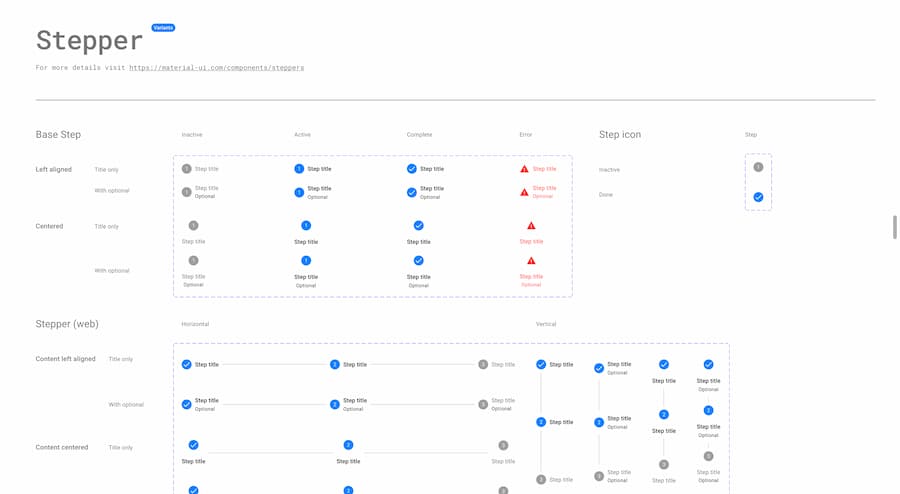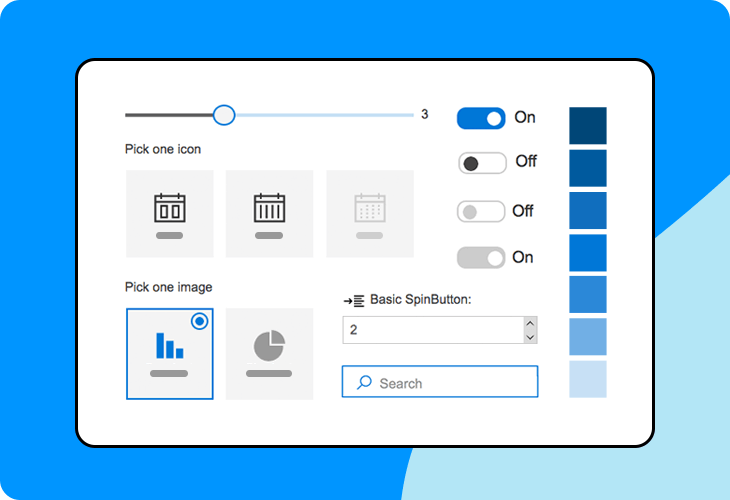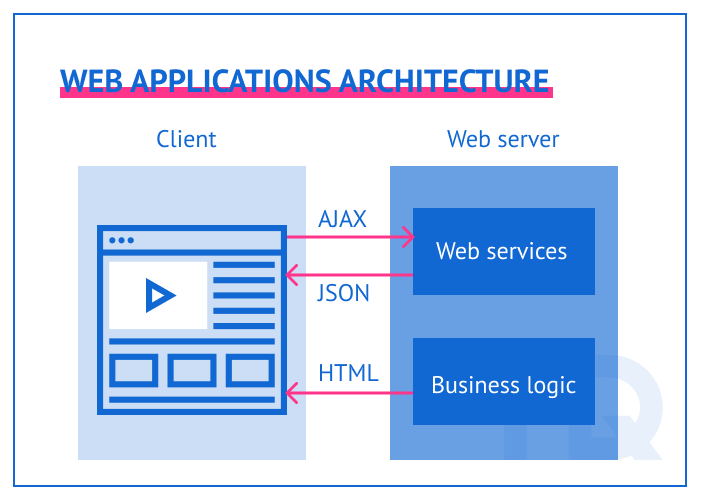In the ever-evolving landscape of web development, the demand for high-performance, maintainable, and interoperable user interfaces has never been greater. While frameworks like React, Vue, and Angular dominate the conversation, a powerful alternative has been steadily gaining traction by embracing web standards: Lit. Lit is not a framework but a simple library for building fast, lightweight web components. Its core philosophy is to enhance standard HTML with a minimal, reactive layer, resulting in components that are incredibly small, efficient, and universally compatible.
This approach offers a compelling advantage in today’s multi-framework world. Instead of being locked into a single ecosystem, developers can create UI elements that work seamlessly anywhere—from a simple static site to a complex application built with Next.js or Nuxt.js. As developers seek to break down monolithic frontends and build more modular design systems, the latest Lit News is that it provides a stable, future-proof foundation. By leveraging the power of native Web Components, Lit empowers teams to write less code, ship faster experiences, and build for the long term, making it a critical tool for modern web artisans.
Understanding the Core Concepts of Lit
At the heart of Lit are two primary concepts that work in tandem: declarative templates powered by lit-html and reactive properties managed by the LitElement base class. This combination provides a development experience that is both intuitive and exceptionally performant, setting it apart from virtual DOM-based libraries.
Declarative Templates with lit-html
Unlike frameworks that use a virtual DOM to diff and update the UI, Lit employs a more direct and efficient method. It uses standard JavaScript tagged template literals to define a component’s HTML structure. When a template is rendered, lit-html doesn’t just create a string of HTML; it creates a template and remembers the specific locations—or “parts”—where your dynamic data is inserted. On subsequent renders, Lit doesn’t re-create the entire DOM tree. Instead, it surgically updates only the parts that have changed. This fine-grained approach avoids costly diffing algorithms and results in blazing-fast updates, a key piece of Vite News for performance enthusiasts who often pair the two technologies.
Reactive Properties with LitElement
LitElement is a base class that extends HTMLElement and manages the component’s lifecycle and reactivity. You define component properties using the @property decorator (or a static properties block). When a property decorated with @property changes, Lit automatically triggers a re-render of the component, ensuring the UI stays in sync with the state. This reactive system is the engine that powers dynamic components.
Let’s look at a classic counter example to see these concepts in action. This component defines a reactive count property and a template that displays its value and buttons to change it.
import { LitElement, html, css } from 'lit';
import { customElement, property } from 'lit/decorators.js';
@customElement('simple-counter')
export class SimpleCounter extends LitElement {
// Define a reactive property 'count'
@property({ type: Number })
count = 0;
// Scoped styles for the component
static styles = css`
:host {
display: block;
padding: 16px;
border: 1px solid #ccc;
border-radius: 8px;
text-align: center;
max-width: 200px;
}
span {
font-size: 2rem;
font-weight: bold;
margin: 0 16px;
}
button {
font-size: 1rem;
padding: 8px 12px;
cursor: pointer;
}
`;
// Methods to update the state
private _increment() {
this.count++;
}
private _decrement() {
this.count--;
}
// The render method returns a lit-html template
render() {
return html`
<div>
<button @click="${this._decrement}">-</button>
<span>${this.count}</span>
<button @click="${this._increment}">+</button>
</div>
`;
}
}In this example, whenever this.count is modified by the button clicks, Lit’s reactivity system schedules an update, and the render() method is called to efficiently update the <span> in the DOM.
Practical Implementation: From Component to Application

Building with Lit involves defining custom elements that encapsulate their own structure, styles, and logic. This modularity makes them perfect for creating reusable UI libraries or micro-frontends. Let’s build a more practical component: a news card that can display an article’s title, summary, and image.
Defining and Styling a News Card Component
A key feature of Web Components, and by extension Lit, is style encapsulation. Using the static styles property with the css tagged template literal, you can write CSS that is scoped exclusively to your component. This prevents styles from leaking out and affecting other parts of the page, and it also protects your component from being unintentionally modified by global stylesheets. This is a significant advantage over traditional CSS methodologies and is a topic often discussed in React News and Vue.js News circles where component styling solutions are a constant point of innovation.
Our news-card component will accept several properties: headline, summary, and imageUrl. This allows us to reuse the same component structure for different news articles, populating it with data from a CMS or an API built with a backend like Node.js and Fastify, which is always a hot topic in Fastify News.
import { LitElement, html, css } from 'lit';
import { customElement, property } from 'lit/decorators.js';
@customElement('news-card')
export class NewsCard extends LitElement {
@property({ type: String })
headline = 'Default Headline';
@property({ type: String })
summary = 'This is a default summary for the news article. Click to learn more.';
@property({ type: String })
imageUrl = 'https://via.placeholder.com/400x200';
static styles = css`
:host {
display: block;
font-family: sans-serif;
max-width: 400px;
border-radius: 12px;
overflow: hidden;
box-shadow: 0 4px 8px rgba(0,0,0,0.1);
transition: transform 0.2s ease-in-out;
}
:host(:hover) {
transform: translateY(-5px);
}
img {
width: 100%;
height: 200px;
object-fit: cover;
}
.content {
padding: 16px;
}
h3 {
margin: 0 0 8px;
font-size: 1.5rem;
color: #333;
}
p {
margin: 0;
font-size: 1rem;
color: #666;
line-height: 1.5;
}
`;
render() {
return html`
<article>
<img src="${this.imageUrl}" alt="${this.headline}" />
<div class="content">
<h3>${this.headline}</h3>
<p>${this.summary}</p>
</div>
</article>
`;
}
}Once defined with @customElement('news-card'), you can use this component directly in your HTML like any standard element: <news-card headline="..." summary="..."></news-card>. This level of interoperability means it can be dropped into projects using Svelte News, Angular News, or even legacy codebases running on jQuery News.
Advanced Techniques for Robust Web Components
Beyond basic rendering and properties, real-world components need to handle user interaction, manage asynchronous data, and communicate with their environment. Lit provides elegant solutions for these common challenges.
Handling Events and Component Communication
Lit uses the @event syntax in its templates to declaratively add event listeners. For component communication, the standard Web Component practice is to dispatch custom events. This allows a component to signal that something has happened without needing to know anything about its parent. The parent can then listen for this event and react accordingly. This decoupled approach is fundamental to building modular systems.
Let’s enhance our news-card with a “Read More” button that dispatches a custom event when clicked, carrying the headline as its payload.
import { LitElement, html, css } from 'lit';
import { customElement, property } from 'lit/decorators.js';
// (Assuming NewsCard class and styles from previous example)
@customElement('interactive-news-card')
export class InteractiveNewsCard extends NewsCard { // Extends the previous card
static styles = [
NewsCard.styles, // Inherit styles from the base card
css`
.actions {
padding: 0 16px 16px;
}
button {
background-color: #007bff;
color: white;
border: none;
padding: 10px 16px;
border-radius: 4px;
cursor: pointer;
font-size: 1rem;
}
button:hover {
background-color: #0056b3;
}
`
];
private _handleReadMoreClick() {
const event = new CustomEvent('read-more', {
detail: { headline: this.headline },
bubbles: true, // Allows the event to bubble up through the DOM
composed: true // Allows the event to cross the shadow DOM boundary
});
this.dispatchEvent(event);
}
render() {
return html`
<article>
<img src="${this.imageUrl}" alt="${this.headline}" />
<div class="content">
<h3>${this.headline}</h3>
<p>${this.summary}</p>
</div>
<div class="actions">
<button @click="${this._handleReadMoreClick}">Read More</button>
</div>
</article>
`;
}
}Managing Asynchronous Data with Directives

Components often need to fetch data from an API. Managing the various states—loading, success, and error—can lead to boilerplate code. Lit offers directives to simplify complex rendering logic. The @lit-labs/task directive is purpose-built for handling asynchronous tasks, automatically re-rendering the component as the task transitions through its states.
Here’s a component that fetches user data and displays the different states using the Task directive.
import { LitElement, html } from 'lit';
import { customElement, property } from 'lit/decorators.js';
import { Task } from '@lit-labs/task';
interface User {
name: string;
email: string;
}
@customElement('user-profile')
export class UserProfile extends LitElement {
@property({ type: Number })
userId = 1;
private _apiTask = new Task(
this,
([userId]) => fetch(`https://jsonplaceholder.typicode.com/users/${userId}`).then(res => {
if (!res.ok) {
throw new Error('Failed to fetch');
}
return res.json() as Promise<User>;
}),
() => [this.userId]
);
render() {
return this._apiTask.render({
pending: () => html`<p>Loading user data...</p>`,
complete: (user: User) => html`
<div>
<h2>${user.name}</h2>
<p>Email: ${user.email}</p>
</div>
`,
error: (e: any) => html`<p>Error: ${e.message}</p>`,
});
}
}This declarative approach to async operations keeps component logic clean and readable. Testing such components is also straightforward with modern tools; the latest Jest News and Vitest News offer excellent support for testing Web Components, while E2E testing can be handled by powerful tools like Playwright or Cypress, a constant source of Cypress News in the testing community.
Best Practices and Performance Optimization
To get the most out of Lit, it’s important to follow best practices that align with its design principles and the broader Web Components ecosystem.
Performance Considerations

While Lit is fast by default, performance can be further optimized. Be mindful of property changes that trigger re-renders. For complex objects or arrays, ensure you are creating new instances rather than mutating them, as Lit’s default property change check is a strict equality (===) comparison. For build optimization, tools like Rollup or Webpack are essential. The latest Rollup News often includes improvements for code-splitting and tree-shaking, which are highly beneficial for shipping minimal component bundles.
Lit in a Poly-Framework World
The true power of Lit shines in its interoperability. A design system built with Lit can serve applications written in React, Vue, Svelte, or any other framework. This eliminates the need to rewrite components for each tech stack, saving immense development time. This is especially relevant in micro-frontend architectures, where different teams might use different technologies. The latest Remix News and Next.js News often highlight strategies for integrating non-framework components, and Lit is a perfect fit.
Common Pitfalls to Avoid
- Direct DOM Manipulation: Avoid manually touching the DOM that Lit controls. Always update state via properties and let Lit’s renderer handle the updates.
- Forgetting
customElements.define(): The@customElementdecorator handles this, but if you’re not using decorators, you must manually callcustomElements.define('my-element', MyElementClass)to register your component. - Complex State Management: For simple components, Lit’s built-in reactivity is sufficient. For application-level state, consider lightweight external libraries rather than trying to build a complex state store within a single component.
Conclusion: The Future is Composable
Lit represents a pragmatic and powerful approach to modern web development. By building on top of stable web standards, it provides a solution that is not only performant and lightweight but also incredibly versatile. Its components can be authored once and used everywhere, breaking down the silos created by monolithic frameworks and paving the way for truly composable user interfaces. Whether you are building a shareable component library, a performance-critical application, or a scalable design system, Lit offers the tools to do so with simplicity and elegance.
As the web platform continues to evolve, with ongoing TypeScript News and Node.js News shaping the developer experience, Lit’s close-to-the-metal philosophy ensures it will remain a relevant and resilient choice. The next step is to explore the official documentation, experiment with its powerful features, and start building your own reusable, framework-agnostic components for the modern web.

